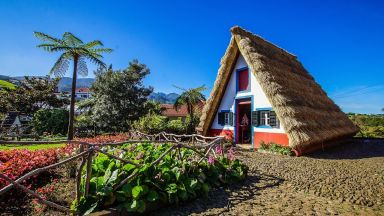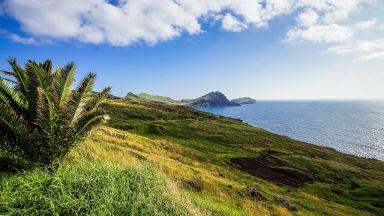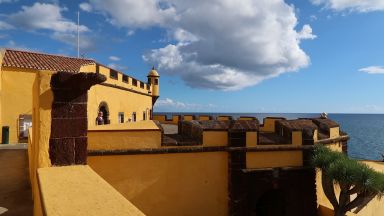Capela de Nossa Senhora da Agonia
Church in Viana do Castelo

The Feast of Senhora da Agonia is renowned as the most famous pilgrimage in the region, typically taking place over the weekend following 15 August (the Solemnity of the Assumption of the Virgin). The celebration comprises of various events, including ethnographic parades, processions on land, and processions on the River Lima, featuring decorated boats. The streets along which the religious procession travels while carrying the Virgin’s image are adorned with flower carpets.
The veneration of Senhora da Agonia traces back to the 18th century and is closely associated with the fishing community’s devotion. It was a way to express gratitude and celebrate the favors granted in times of hardship, particularly during storms and shipwrecks.
In 1674, a chapel devoted to the Good Jesus of the Holy Sepulchre of Calvary was built on the current shrine’s site. By the 18th century, the chapel had been dedicated to Marian devotion and was referred to as a chapel of Our Lady of Solitude. In 1744, it was renamed Our Lady of Agony, the name it bears today. The chapel underwent expansion in the latter half of the 18th century and became the church that was blessed in 1759. A Solemn Mass was held every year on August 20 from 1783, which eventually became a municipal holiday and the origin of the pilgrimage.
Throughout the 19th century, the building underwent several extensions and renovations, including the addition of the central staircase we see today. The church interior features an octagonal floor plan with the high altar leading the nave. The altarpieces and pulpit are adorned with Braga talha gorda woodcarving. The pulpit rostrum depicts the Calvary scene, with Our Lady of Agony’s image atop. Visitors can admire several oil paintings portraying evangelists and scenes from the Passion of Christ by the Italian painter Pascoal Parente, as well as an eighteenth-century organ. The oldest ex-voto dates back to 1733.
The church annexes include the chaplain’s residence located above the sacristy and the Consistory Hall, displaying portraits of benefactors. The rear tower erected in 1868 is positioned away from the building’s main body to avoid obstructing the pilgrims on their procession around it.
The pilgrimage’s highlights, drawing numerous visitors to Viana do Castelo, include the ethnographic parade, the gigantones and cabeçudos parade, and the costume festival.
The Capela de Nossa Senhora da Agonia appears in our Complete Guide to Visiting Viana do Castelo!
This website uses affiliate links which may earn a commission at no additional cost to you!
Visiting Capela de Nossa Senhora da Agonia
Nearby Attractions
- Citania de Santa Luzia (18.4) km
Historic Site in Viana do Castelo - Santuário de Santa Luzia (18.8) km
Basilica in Viana do Castelo - Funicular de Santa Luzia (19.3) km
Railway in Viana do Castelo - Igreja da Misericórdia de Viana do Castelo (19.7) km
Church in Viana do Castelo - Praça da República (Viana do Castelo) (19.7) km
Square in Viana do Castelo - Sé Catedral de Viana do Castelo (Igreja Matriz) (19.7) km
Cathedral in Viana do Castelo - Museu de Artes Decorativas (19.9) km
Historic Building and Museum in Viana do Castelo - Casa dos Nichos (19.9) km
Historic Site and Museum in Viana do Castelo - Gil Eannes Ship (20.1) km
Museum in Viana do Castelo - Forte de Santiago da Barra (20.2) km
Castle in Viana do Castelo


